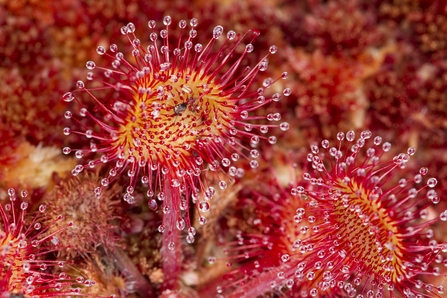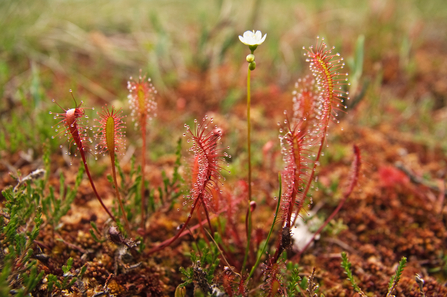There are hundreds of thousands of plant species which resort to the conventional methods of acquiring nutrients, such as drawing minerals from the soil or recycling sunlight using chloroplasts in their leaf tissue. There are even some that have found clever shortcuts to this process (i.e. orchids), like intercepting the roots of fungi to get a bit of ‘easy energy’ but there is one group that has truly put in the extra legwork; they have the ingenuity, speed and raw power to take down any decently sized insect… To anyone who says plants are boring, welcome to the wonderful world of sundews!
Sundews are a family of carnivorous plants which have fascinated botanists for decades. Even the great Charles Darwin was hugely devoted to this group, and I completely see why. Their enigmatic nature makes them something of a sport to find, and the interesting morphology of their leaves makes them unique, to say the least! The leaves are covered with a plethora of carmine-red stalks, which are all tipped with an incredibly sticky, enzyme-filled mucus from which few flying invertebrates can escape. Once ensnared, the leaf begins to constrict its helpless prey by curling up around it. After a few minutes, the enzymes have usually immobilised the insect and left it all but dead. This extremely successful reaction and the near-instant paralysis the plant induces are unusual aspects among the species of these isles, and I have much respect for them.
Sundews in Norfolk are indeed a rather rare sight, found only in peat bogs in the northwest. Many NWT reserves offer a special opportunity to see them at close range, provided care is taken not to trample any plants or their habitats. The three species of sundew are found in broadly the same habitat - acid bogs with large beds of sphagnum mosses and small pools or ditches. The most common of the lot are round-leaved, found around most sites with good habitat, but mainly in North Norfolk. Easily recognisable for their almost perfectly disc-shaped leaves, this sundew likes to grow among carpeting sphagnum mosses, often in large clusters or mats.



